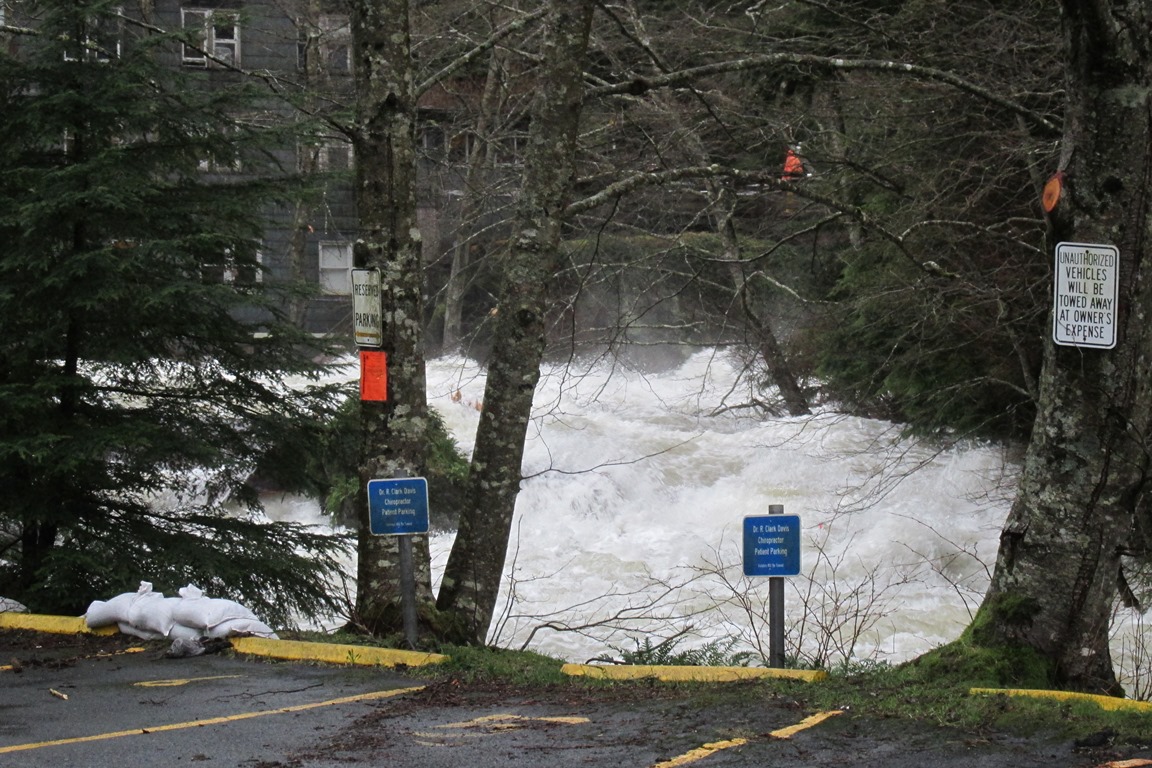Climate scientists say a warming planet is likely to make big rainstorms in Southeast and Western Alaska more common. And rising temperatures are also forcing researchers to reconsider just how much rain a storm can drop.
Researchers project that storms that used to come around once every 20 years or so could start to occur every five to 10 years in Southeast Alaska, or every three years in Western Alaska.
But what is a 20-year storm? Jeremy Littell is a United States Geological Survey researcher who works with the Alaska Center for Climate Assessment and Policy. Let’s say you look out your window and see sheets of rain coming down. You say to yourself, “Wow, that’s quite a rainstorm.”
“If your neighbors are saying, ‘Well, that’s also impressive,’ and they lived there a long time, then probably, you know, you’re approaching that 1 in 20 years,” Littell said in a phone interview. He presented the findings at a webinar earlier this month.
To get a little more technical, a 20-year storm has a 5% chance of happening every year. As the planet warms, Littell projects that 5% will move to 10%-20% in Southeast, or 33% in Western Alaska.
For a more concrete example, think back to the late November and early December storm that triggered flood warnings and threatened to damage a dam upstream of downtown Ketchikan. That storm dumped 19.9 inches of rain in seven days, making it a roughly 20-year event.
Littell projects that as the Earth warms, storms like that could happen every five to 10 years.
But Littell said that’s not the whole story.
“So the game changer is that while we were focused on the 1 in 20-year event, which was previously kind of our definition of extreme, the definition of what is possible was also changing,” Littell said.
As storms that were once thought of as extreme become more common, storms that are thought of as impossible — or at least extremely unlikely — start to become real concerns.
“It can lead us into a false sense of security by saying, ‘Oh, well, okay, we can plan for 1 in 4 instead of 1 in 20, that’s okay.’ But you’re not thinking about 1 in 500, 1 in 1,000, you know, those are no longer 1 in 1,000. Whether they’re 1 in 100, or 1 in 500, or 1 in 20, nobody really knows for certain yet,” Littell said.
Take the rainfall that triggered a deadly landslide in Haines in December. That was even more out of the ordinary — a 200- to 500-year storm over two days. Littell said scientists also expect those to become more likely — though he said they’re not sure just how much more likely.
In any case, though, Littell said the rising chance of severe precipitation — both rain and snow — should be on state and local officials’ minds when thinking about things like public works projects and building codes.
“All of our built environment is affected by those kinds of assumptions, and the codes that we relied on in the past may not be sufficient for the extreme events that we could expect to encounter in the future,” he said.
Just how much more common these 20-year storms become depends on how much warmer the planet gets. That depends on what’s done to curb greenhouse gas emissions, among other things.
But Littell said it pays to prepare for a warmer future, even if the United Nations’ most dire predictions of an eight-degree Fahrenheit rise in global temperatures by 2100 don’t come to fruition.
“In that case, you came out ahead, even if you invested quite a bit on the front end. But if you plan for that lower-warming future, and you get the higher-warming future and didn’t plan for it, then those consequences might be quite a bit more impactful,” Littell said.
Just like with any natural disaster, it’s better to prepare for the worst, and hope for the best.
This story was produced as part of a collaboration between KRBD and Alaska’s Energy Desk.






